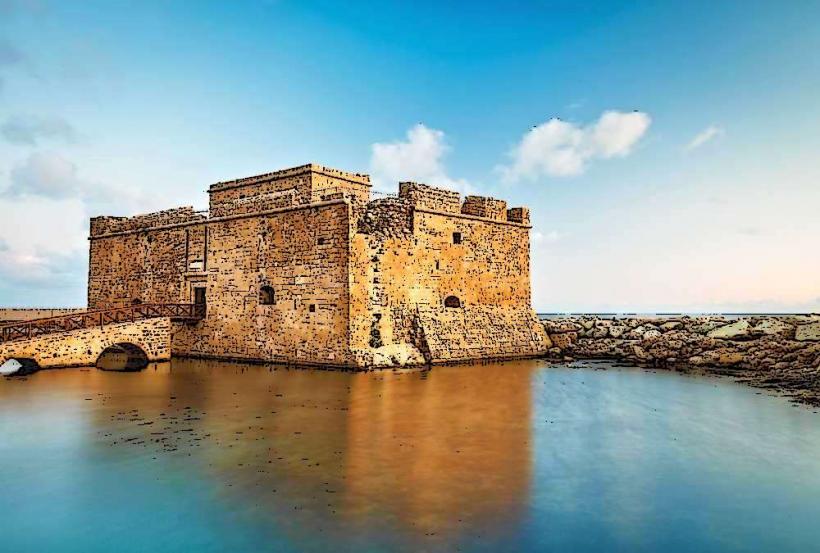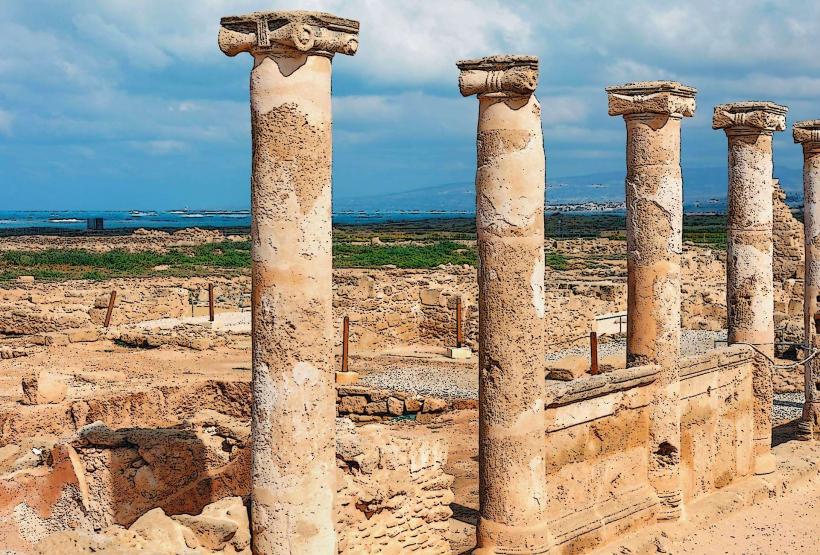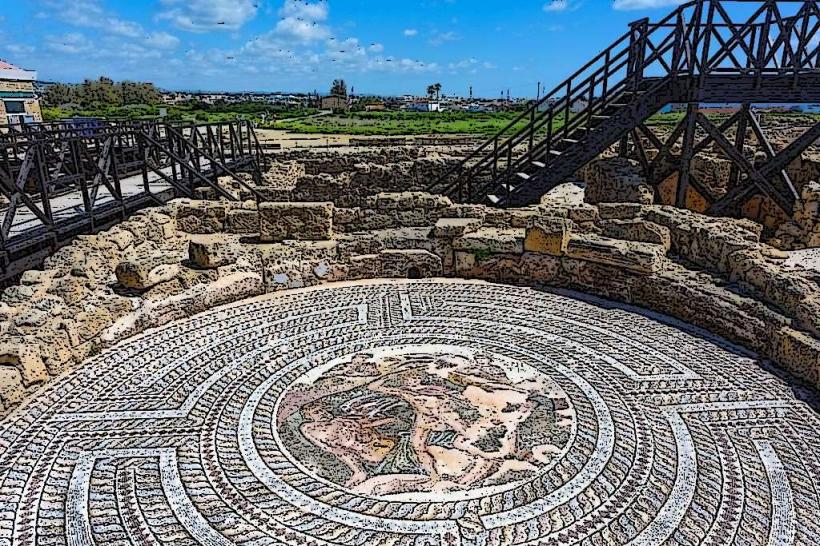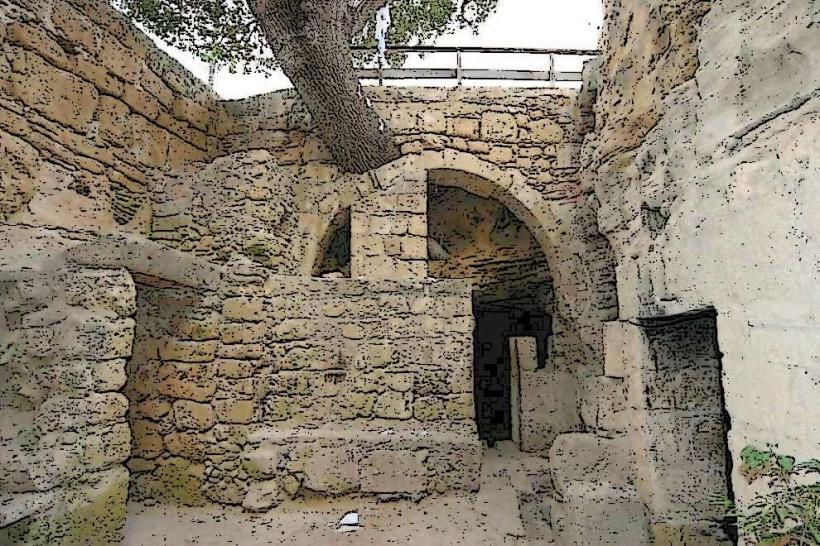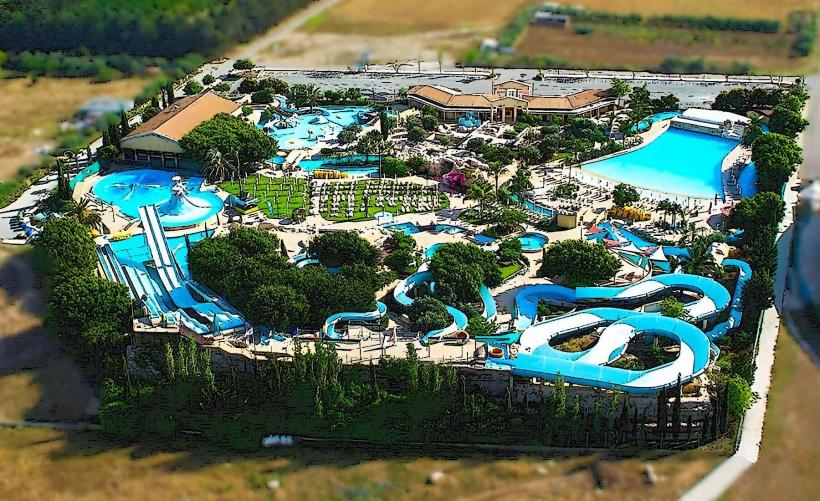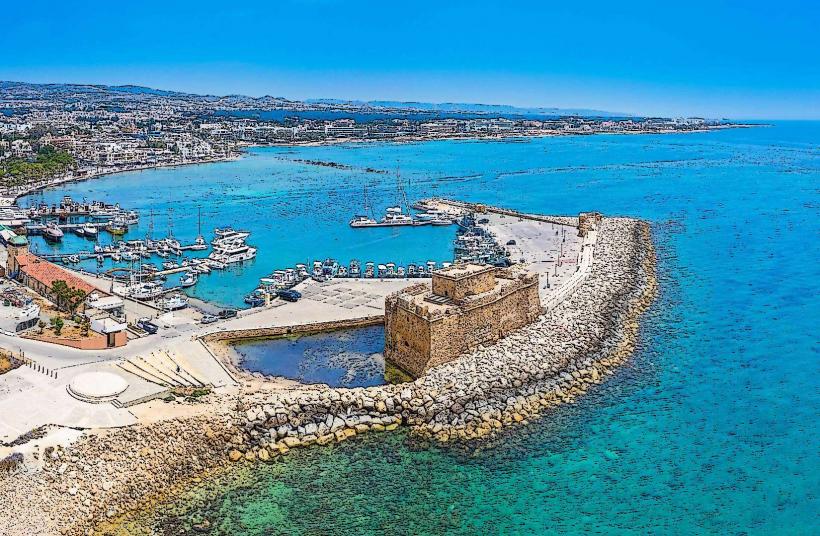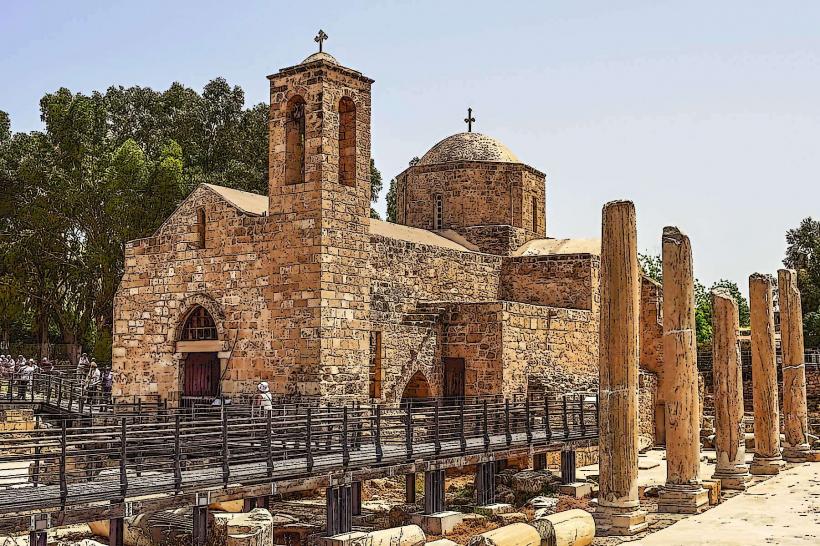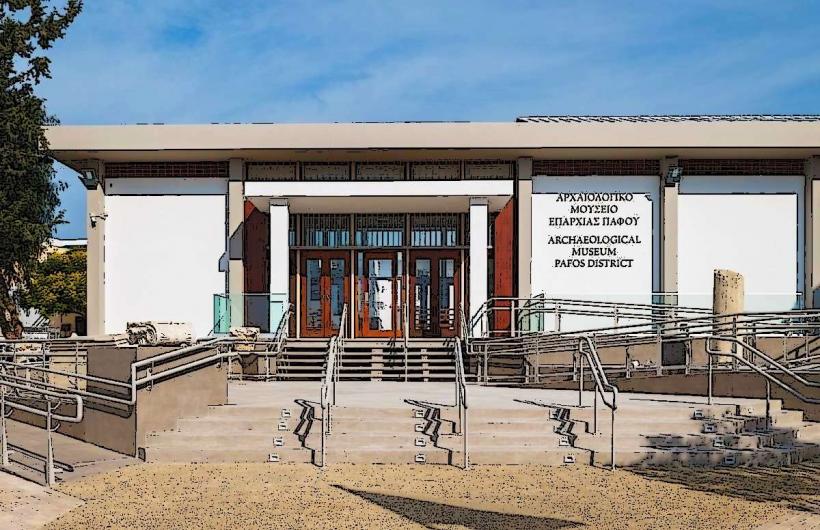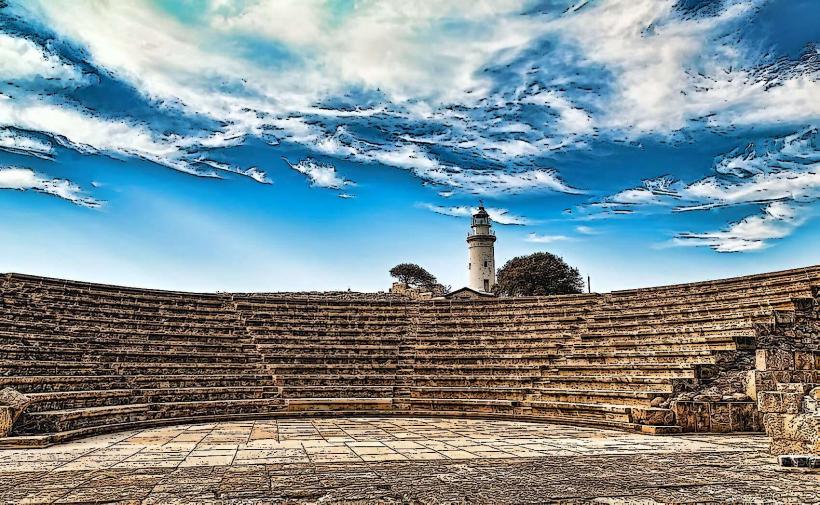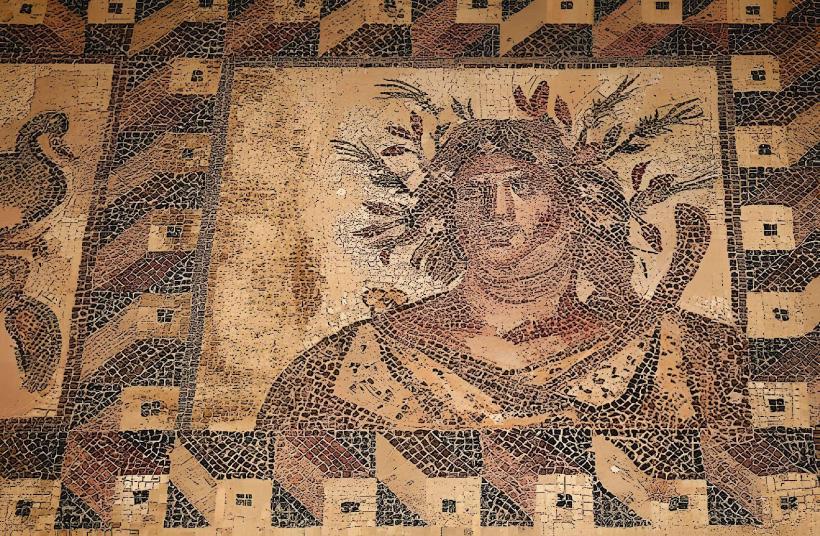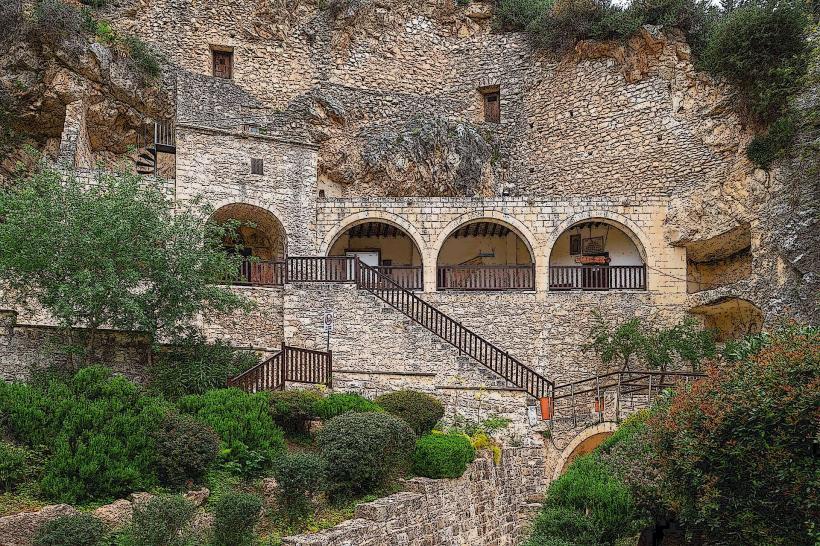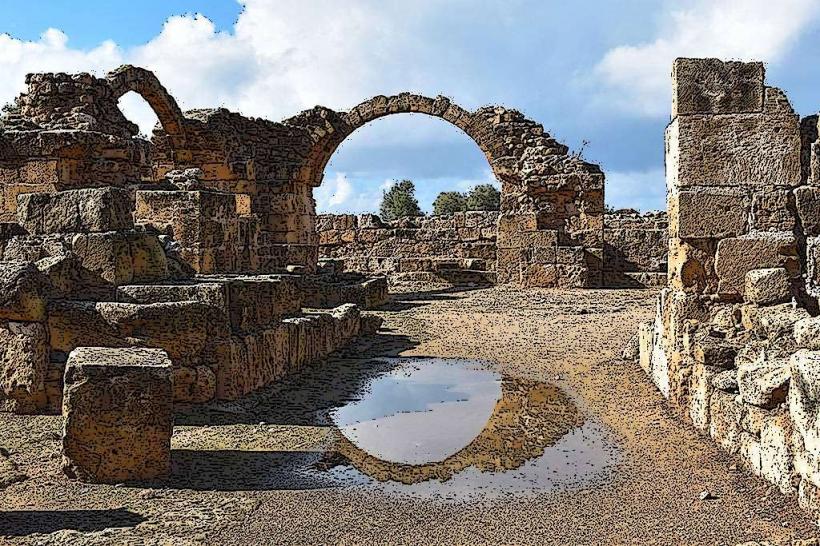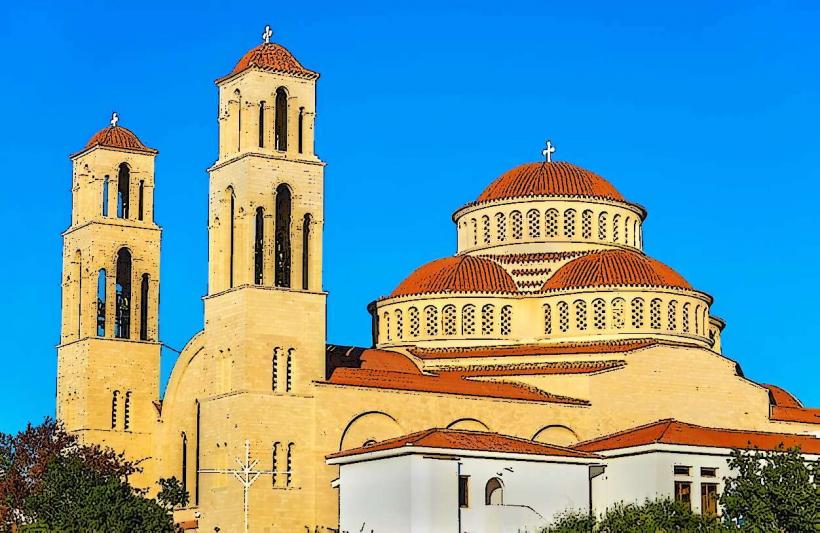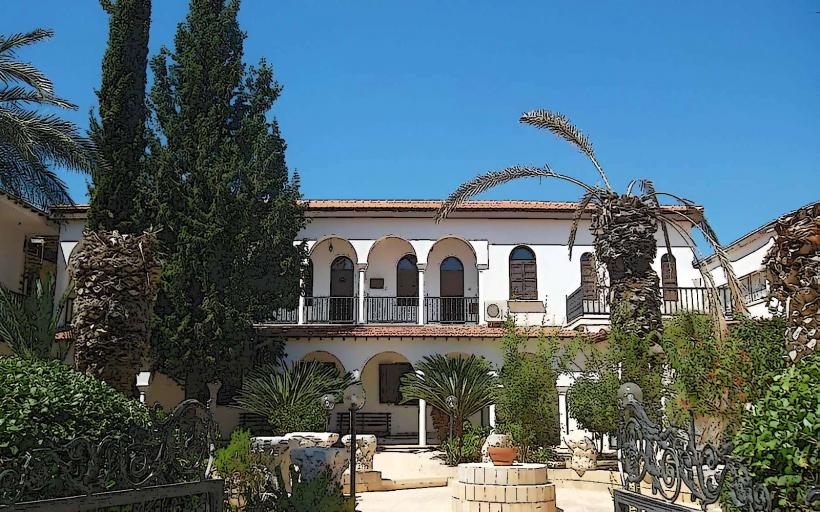Information
Landmark: Tombs of the KingsCity: Paphos
Country: Cyprus
Continent: Europe
The Tombs of the Kings (Greek: Tafes ton Vasileon) is one of the most significant archaeological sites in Cyprus and is located just outside the Paphos Archaeological Park, on the northwest outskirts of the modern town of Paphos. Despite its name, the tombs were not the burial sites of actual kings, but rather those of wealthy and noble individuals from the Hellenistic period (4th century BCE to 3rd century CE). The site is renowned for its impressive tombs carved into the soft sandstone cliffs, and it is a UNESCO World Heritage Site as part of the broader Paphos Archaeological Park.
Key Features of the Tombs of the Kings
Impressive Architecture:
- The tombs are cut into the rock face and are often characterized by a combination of underground chambers and grand facades that mimic classical Greek temple architecture, with columns, and sometimes elaborate doorways. Many tombs are adorned with decorative elements such as Doric columns and simple stone benches.
- The architectural style is a mixture of Greek and local influences, reflecting the cosmopolitan nature of ancient Paphos, which was under Hellenistic Greek and later Roman control.
Tomb Layouts:
- The tombs themselves are varied, with some being simple, unadorned chambers, while others have been built to resemble elaborate Greek temples or monumental structures. These tombs were designed to house the deceased along with offerings, providing a final resting place for the city's elite.
- Some of the tombs contain multiple chambers, with smaller spaces for family members or servants to be buried alongside the principal deceased.
Rock-Cut Chambers:
- Most of the tombs are carved into the solid rock of the cliffside, giving the site its distinctive appearance. Inside, the tombs typically consist of large, rectangular chambers with niches for the burial of the deceased, as well as a small courtyard area. Some of the chambers were also used for rituals and offerings to the dead.
Decorative Elements:
- Although the tombs are relatively simple in terms of decoration, the tombs often feature Greek-style carvings, columns, and benches made of stone. Some have been excavated to reveal murals, inscriptions, and artifacts that provide insight into the burial practices and social status of the deceased.
- Fragments of painted plaster and pottery have been found in the tombs, some of which have been preserved and displayed in local museums, shedding light on the funerary rituals of the time.
Historical Context:
- The Tombs of the Kings were built during the Hellenistic and Roman periods when Paphos was an important center of wealth, trade, and culture. Although the name "Tombs of the Kings" is misleading, it reflects the grandeur of the tombs and the high status of their occupants, who were likely aristocrats or officials with significant wealth.
- The tombs were likely used between the 4th century BCE and the 3rd century CE, spanning the Hellenistic to Roman periods. After the Roman period, the tombs fell into disuse, and many were looted over time.
Burial Practices:
- The tombs were used to bury the elite members of society, often accompanied by grave goods such as pottery, jewelry, and coins. The layout of the tombs suggests that the wealthy were given elaborate burial rites, which may have included offerings and rituals aimed at securing a peaceful afterlife.
- The larger and more elaborate tombs indicate the high social rank of the deceased, and some may have been associated with important religious or political figures.
Current Preservation and Access:
- Today, the Tombs of the Kings are a popular tourist destination and are easily accessible. Visitors can walk among the tombs, explore their chambers, and view the remnants of ancient grave goods and inscriptions.
- The site is well-preserved, and some of the tombs have been cleared of rubble and partially reconstructed, offering an impressive view of the ancient burial practices and architecture.
- The site is open to the public, with paths and signage that provide context and information about the history and significance of the tombs.
Significance
- Cultural Heritage: The Tombs of the Kings provide a fascinating glimpse into the funerary customs of ancient Cyprus, particularly the high-ranking citizens of Paphos during the Hellenistic and Roman periods. The site illustrates the cultural and architectural influences of both Greek and Roman civilizations on the island.
- Historical and Archaeological Importance: The tombs have been an important source of archaeological discoveries, shedding light on the social structure, burial rituals, and daily life of the ancient Cypriots. Many of the artifacts and inscriptions found at the site are displayed in the Paphos Archaeological Museum and provide valuable insights into the region’s history.
- Tourism: The Tombs of the Kings, along with other historical sites in Paphos, contributes to the region's status as a key destination for cultural and heritage tourism. The site is a must-visit for those interested in the ancient history of Cyprus and the Mediterranean.
Conclusion
The Tombs of the Kings is one of the most remarkable and evocative archaeological sites in Cyprus, offering a unique look at the burial practices and architectural styles of ancient aristocracy. It provides a rich historical context that connects the ancient world of Cyprus with broader Hellenistic and Roman cultural traditions, making it an essential stop for those interested in the island's fascinating past.

